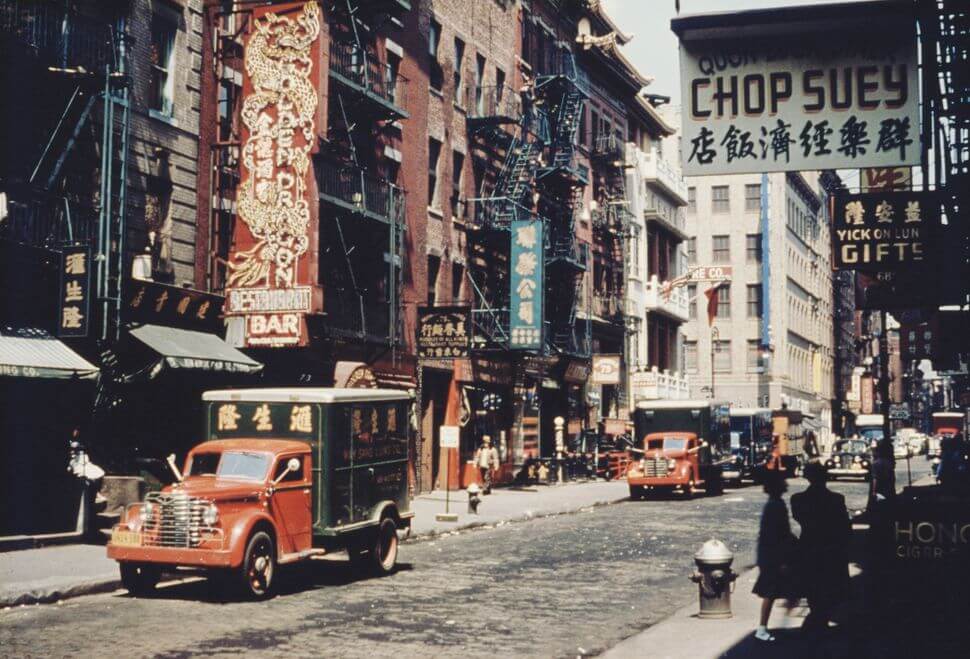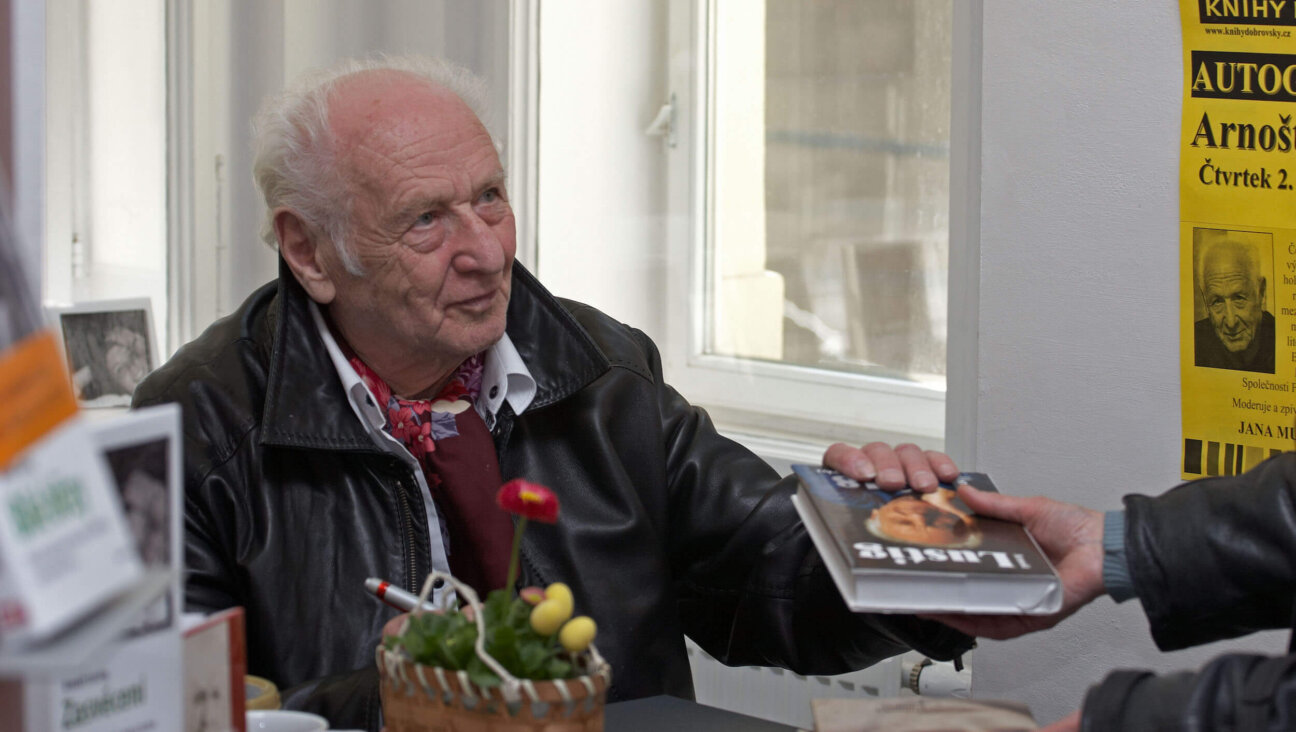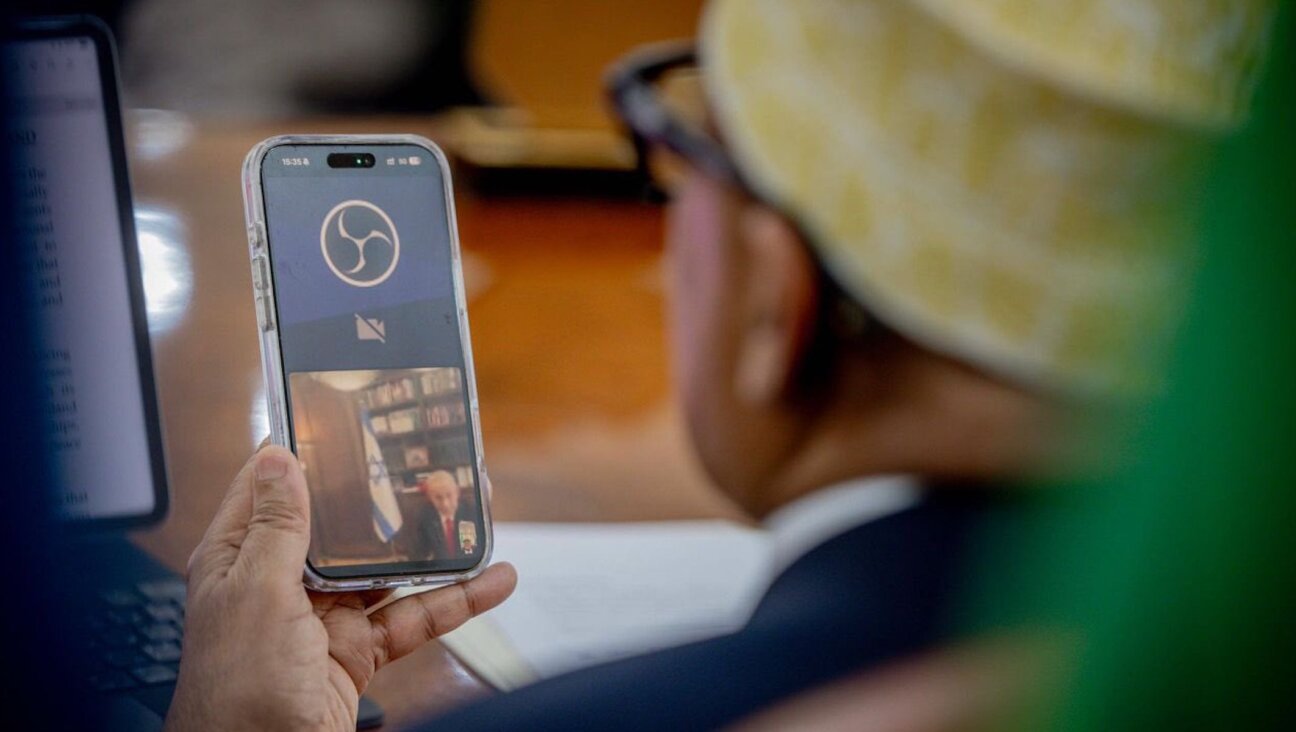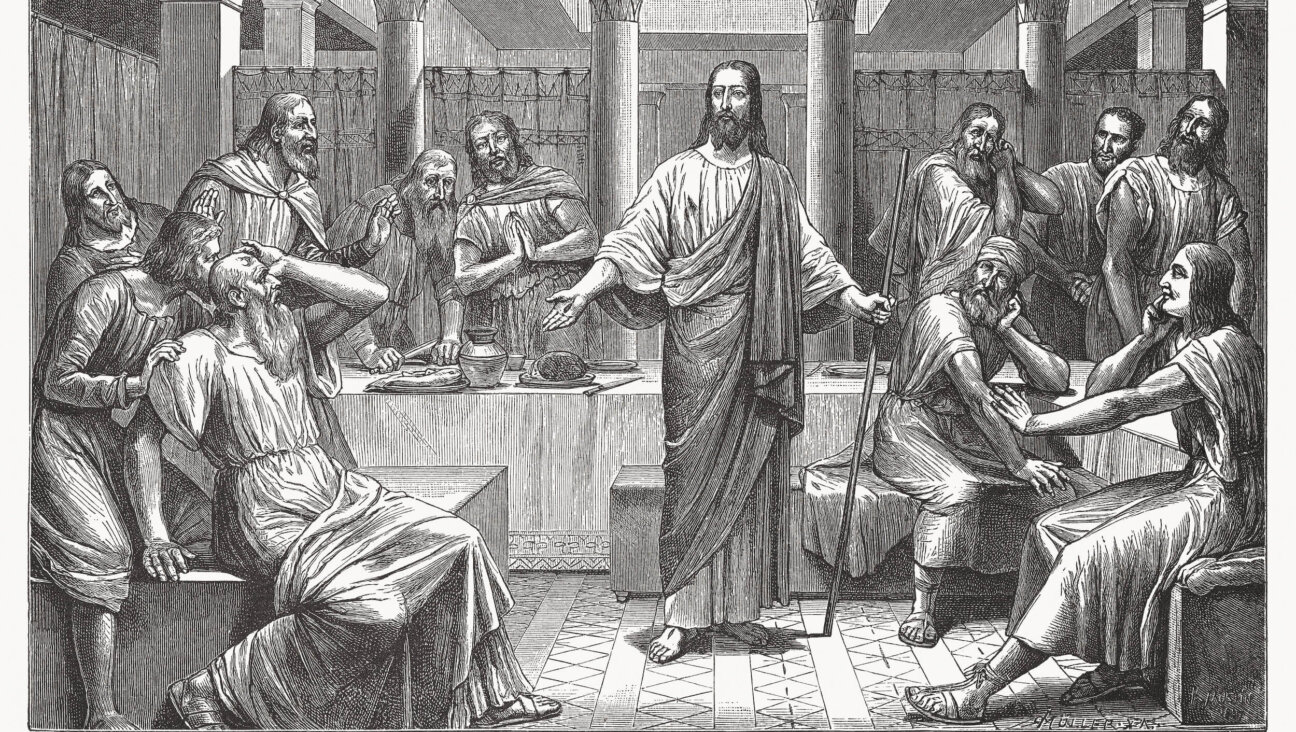Seven Centuries Later, A Jewish Treasure Trove Tells A Tragic Tale

The Cloisters in NYC Image by Getty Images
Getting to The Colmar Treasure, a fourteenth century time capsule now on view at the Met Cloisters, is an adventure in itself, no matter how many times you have walked up the steep curving path through Fort Tryon Park with its picturesque cliffs and views of the Palisades. The Cloisters, a 1938 complex that incorporates medieval architectural fragments, is not severe enough to seem medieval in spirit, but the artworks and decorative objects inside certainly are. Jesus Christ, here is some serious stuff! Significant deaths, important wounds, lizard-limbed devils. In a wood relief, Mary, blind with grief, holds the limp, pierced body of her son. Nearby, she is herself laying in state, surrounded by an intricately carved group of robed men absorbed in prayer.
Next to these scenes of divine misery, divine piety and divine violence, the Colmar Treasure — a stash of coins, jewelry, and personal objects that used to belong to a fourteenth century Jewish family — offers an antidote, a glimpse of earthbound joys of prosperous private citizens. It also tells the story of a tragedy.
The family hid its valuables in a wall in 1348, when Colmar was part of the Holy Roman Empire. More than half a millennium later, in 1863, their treasure was uncovered during a renovation of a confectionery store in the modern-day French city of Colmar.

A Jewish ceremonial wedding ring thought to be from late 13th or early 14th century Italy. Image by Private Collection Courtesy Of The Met Museum
In fourteenth century Colmar, Jewish merchants had lived alongside Christians. By the time the Plague struck in 1348-49, they had built a synagogue, a mikveh, and a school. But the plague tested the prejudices of their neighbors, and in a plot twist that would recur throughout history, the Jews were blamed. How else to explain the disease, right? Ignoring Papal defense of the Jews in favor of the brutal emotional logic of despair, the Christian citizens of Colmar burned their Jewish neighbors. Likely sensing danger, the family hid its most prized possessions. When they failed to retrieve them, they inadvertently sent a message across centuries.
It’s amazing how much can be learned from these diminutive artifacts. One of the display cases contains a pile of coins. Most are silver, but one is gold. Since all Jewish families with assets over twenty florins had to pay an annual tax of one golden florin to the Holy Roman Emperor, it’s easy to infer that the family was saving this single gold coin to pay their taxes when normal life would resume.
Jewelry was as symbolic in the middle ages as it is now. An intricate belt has inscriptions about love and health, and bears a woman’s name, “ANCH,” a German equivalent of “Annie.” A buckle incorporates a miniature charm of a dog on its hind legs, posed as if begging for a treat — a symbol of loyalty. A rare onyx ring with an inscription “AVDI, VIDI” (“I heard, I see”) and a band shaped like a pair of clasped hands, may have commemorated a friend who had died.
The family was fond of beautiful rings, and there are several here, but the pièce de résistance is a traditional Jewish wedding ring. Decorated with red and green enamel, it’s shaped like the imagined dome of the lost Temple in Jerusalem. Hebrew letters spell “mazal tov” on the dome’s roof.
The objects from Colmar are augmented with contemporary proxies and ephemera of Jewish life. A particularly striking example is an illuminated page from a Hebrew prayer book. Exuberantly decorated with a drawing of a red bird, it survived because it was reused as an endpaper for a Christian theological text.
A bird’s-eye-view engraving of Colmar, published in 1548, features eight churches, but not a trace of the Jewish presence. But unbeknown to the artist, inside one of the buildings he had depicted, the Colmar Treasure is waiting to bear witness to the town’s Jewish past.
This is a tiny show, but one worth seeing. The story it tells is larger than the objects that comprise it.
“The Colmar Treasure: A Medieval Jewish Legacy” is showing at the Met Cloisters through Jan 12, 2020.
Anya Ulinich is the Forward’s contributing art critic.

















